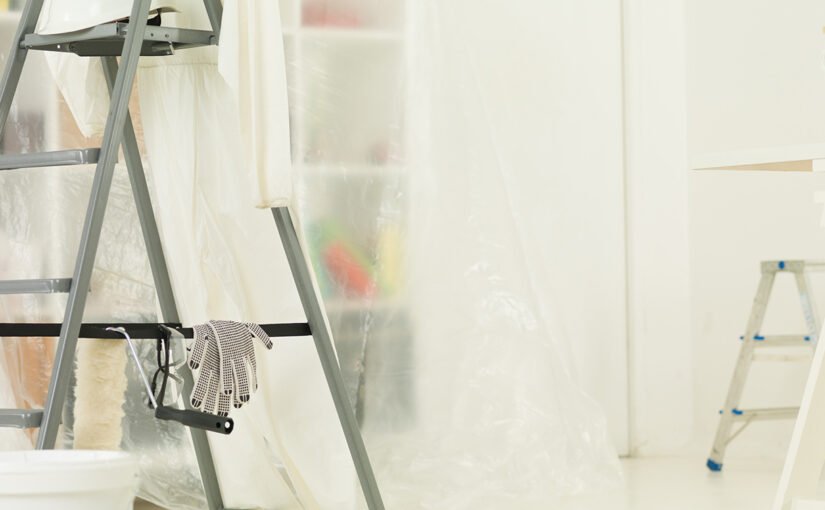Painting can be quite a messy thing and if you paint a lot, you need to have some tips handy to make paint clean-up a seamless activity. Since many tools go into the painting process, it is imperative that you know how to go about with each tool, how to maintain them, and basically have a list of to-dos that you automatically follow after a paint job. The tips in this article are easy to follow and can save you a lot of time. Now, let’s get to it –
The Mandatory Drop Cloth
You absolutely should have it ready before your paint job starts. If you flatten out cardboard boxes, they can be a very good drop cloth alternative. They can be cut into any size you want and are thick enough to resist thick paint spills preventing it from sipping onto the floor. Old shower curtains are also a good choice. However, if you are looking for a variety of options, you can check out Zip Wall products which have several, top-quality products.
Keep Your Paint Can Rim Gunk-Free
Another way to smoothen the paint clean-up process is to ensure that gunk does not build up in the rim area. An easy way to achieve this is by using an awl and a hammer to punch holes in the can rim throughout its perimeter which will enable the paint to drip back inside the can instead of getting stuck in the rim. This also minimizes the need to clean the rim after you are done.
The best way, however, is to pour the paint into a tray or something akin to that; even empty coffee containers work! However, if you absolutely want to dip into the can directly, wire scrapers can be fitted over the paint can where some of the paint can be wiped off after a dip in the can.
How to Get Your Hands Cleaned
Getting the paint off your hands can be quite the task, especially with many paint formulas coming in paint + primer combination. While latex gloves can be used, having them on for a long time can seem uncomfortable. There are some excellent soaps that can come to the rescue – try some strong pumice soap that will adequately get the paint off without having a drying effect on the skin.
Handling Your Paint Tray
Paint tray liners can prove to be a costly affair if you paint a lot. Instead, invest in some foil and line your paint tray with it. After use, you can simply dispose of them.
Cleaning Your Paint Brush
A few steps here –
(a) If your paint brush has a heavy crust and needs soaking, get a magnet glued on the inside of a tin can. The brush’s metal ferrule will get stuck to it with the bristles away from the can bottom where they are likely to get damaged
(b) As an alternative to washing your brush in between coats or overnight, get it locked in a zip bag in the refrigerator. When it’s time to use it again, let it get to room temperature and it can be used readily.
(c) While cleaning out the brush, immerse it in soapy, warm water and then with the help of a brush comb, dried paint lodged on the inside of the bristles and the bottom of the metal ferrule can be removed.
(d) Following these methods will help lessen excessive paint built up and also help in preserving the health of your paint brush.
Cleaning the Paint Roller
If your home has a septic system, cleaning the paint roller almost becomes an impossible task. Not an ideal choice, but in this case, the best is to throw it away after you are done with it. If white is the primary colour you use with a paint roller, keep it refrigerated like it is advised for paint brushes. Take it out when it is time to use it again and put it back in the refrigerator after use again. When you see it has reached the end of its lifespan, it’s time to get another.
Running a curved blade of a 5-in-1 tool on the surface of the roller can be used to get rid of excess paint after which you can use hot water and your hands to wriggle out the remainder paint off the fibres.
All in all, choosing the right painting tools will make your painting life a much easier one.






